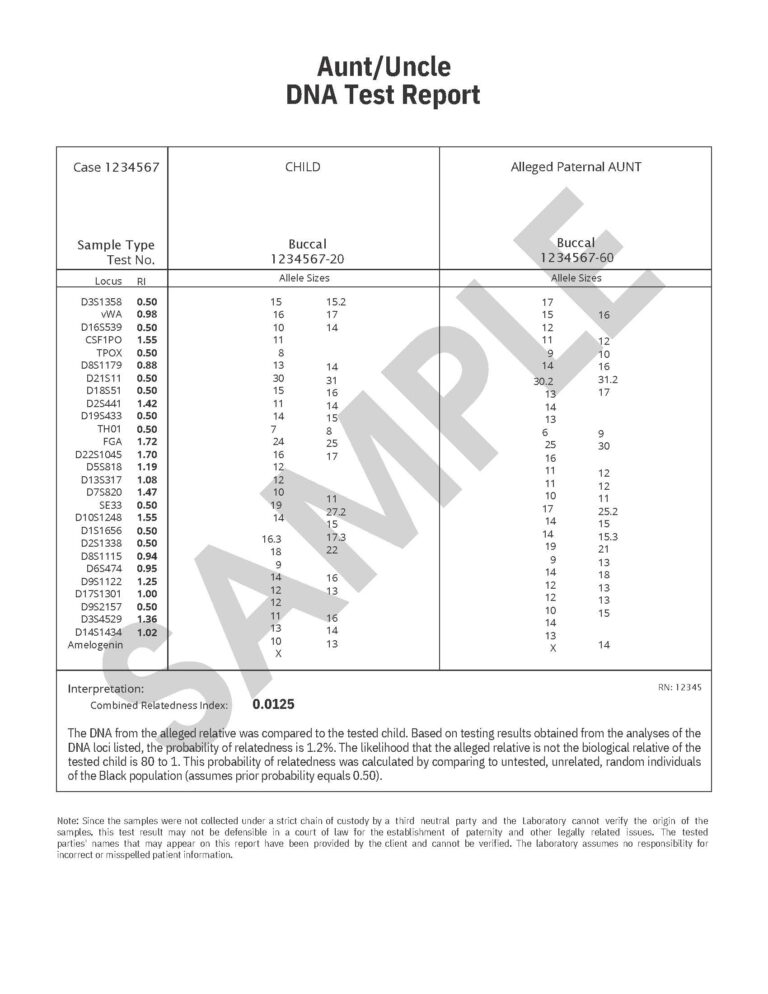At HomePaternity, we offer a variety of home DNA relationship tests, including paternity, maternity, sibling, grandparent, and more. While each test has slightly different result formats, they all follow the same core principles when it comes to interpreting the findings.
Here’s what to expect once you receive your results.
Where to access your results
When you complete a DNA relationship test through HomePaternity, we’ll send you an email once your results are ready. For your privacy and security, test results are only available through our secure results portal. You’ll never receive a phone call, text message, or email attachment with your results, and we never disclose the results of a DNA test over the phone or discuss with anyone without your explicit consent.
HomePaternity test reports will not include the names of tested parties. Instead, participants are labeled using terms like “MOTHER” “CHILD” or “alleged FATHER”. This also helps to protect your privacy.
What you'll see on home paternity results
When you review your results, there are three key areas to note:
Combined Paternity Index (CPI)
A number that shows how strongly the tested man’s DNA matches the child’s, compared to a random man of the same race. The higher the CPI on the report is, the stronger the results are.
Probability of Paternity
Expressed as a percentage, this will be at least 99.999% when the tested man is the biological father. If he is not the biological father, the probability of paternity will be 0%.
The probability of paternity can never be 100% because we would have to test every man in the world of the same race.
The Conclusion Sentence
If your results say, “the alleged father is not excluded as the biological father of the tested child”, the tested man is considered to be the biological father.
If your results say, “the alleged father is excluded as the biological father of the tested child”, the tested man is not the father.
How to read other relationship DNA test results
Interpreting the results of a different relationship DNA test can be a little more challenging than a typical paternity test. Calculations for a grandparent, aunt/uncle, sibling, and maternity DNA test involve statistics, so the results will appear as a probability of relationship (which is shown as a percentage):
- 90.9% or higher: the relationship is supported by DNA testing
- 9.09% to 90.9%: inconclusive result and additional parties need to be tested
- Below 9.09%: the relationship is not supported by DNA testing (in other words, it is unlikely that the tested person is the sibling, grandparent of the other party)
If a probability of relationship (PRI) of 92% is given for your test, the result can be understood as: “There is a 92% probability that the persons tested share the tested biological relationship.”
Need a legal DNA test?
If you need a DNA test for child support, custody, immigration, or other purposes for court, please contact our partners at DDC.



